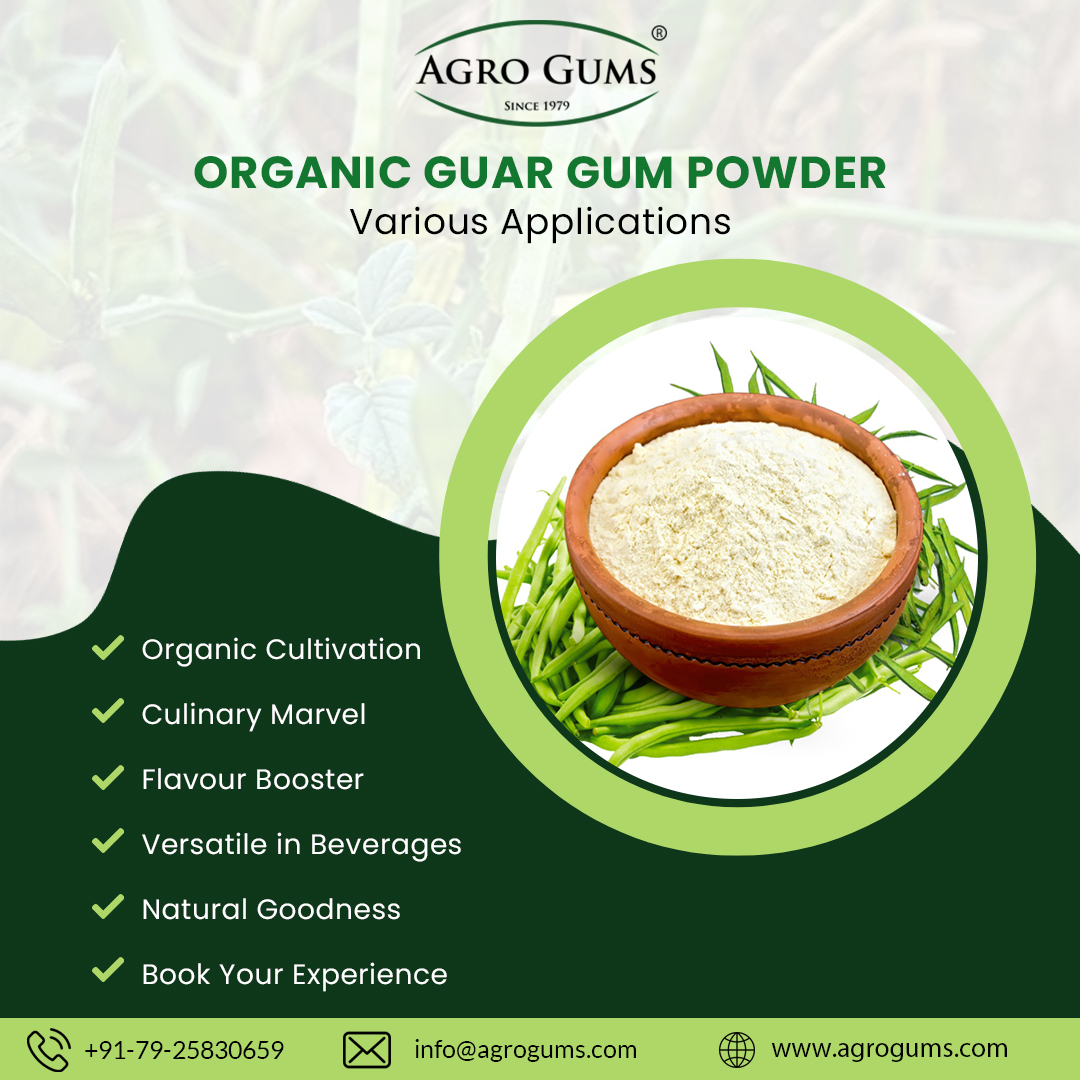Guar gum, derived from the guar plant, has undergone an impressive evolution from its agricultural roots to becoming an essential ingredient across numerous industries. Its journey reflects not only advancements in technology but also growing global demand for natural, versatile, and sustainable products. This article traces the transformation of guar gum products, from cultivation to their diverse industrial applications, while highlighting the key role of manufacturers, suppliers, and exporters in this evolution.
The Agricultural Beginnings of Guar Gum
1. The Guar Plant: An Overview
Native to the arid regions of India and Pakistan, the guar plant is a hardy legume that thrives in semi-arid climates. Farmers have traditionally cultivated guar beans for their ability to enrich soil with nitrogen, making them a valuable crop in sustainable farming practices.
2. Traditional Uses of Guar Beans
Before its industrial potential was realized, guar was primarily used as cattle feed, with its pods consumed locally as vegetables. Its seeds, rich in galactomannan (the core component of guar gum), were often overlooked for their broader commercial value.
From Seed to Guar Gum Powder: The Processing Journey
1. Extraction and Refinement
The industrial use of guar gum began with the extraction of its endosperm, which is ground into a fine powder. This guar gum powder retains its natural thickening, binding, and stabilizing properties, making it suitable for a variety of applications.
2. Fast Hydration Guar Gum Powder
One of the most notable advancements in processing is the development of fast hydration guar gum powder. Known for its rapid viscosity-building properties, this specialized form is widely used in industries like oil drilling, where quick and efficient hydration is essential.
3. The Role of Guar Gum Manufacturers
Guar gum powder manufacturers have played a critical role in refining extraction techniques to enhance the purity, functionality, and yield of guar gum. Their efforts ensure that the product meets stringent industry standards.
Guar Gum’s Entry into Industry
1. Food and Beverage Applications
Guar gum was first embraced by the food industry for its natural thickening and stabilizing properties. It is now a common ingredient in:
- Ice creams and frozen desserts, where it prevents crystal formation.
- Sauces and dressings, ensuring consistent texture.
- Gluten-free baked goods, replacing the structural role of gluten.
2. Pharmaceutical Use
The pharmaceutical sector soon recognized guar gum’s value as an excipient in drug formulations. It is used to:
- Stabilize liquid medicines.
- Control the release of active ingredients in tablets.
- Improve the texture of topical creams and gels.
3. Cosmetic Industry Integration
The cosmetic industry adopted guar gum as a natural thickener for creams, lotions, and shampoos. Its biodegradability and gentle properties align with the demand for sustainable and skin-friendly beauty products.
4. Expansion into Oil and Gas
The discovery of guar gum’s potential in hydraulic fracturing revolutionized its industrial use. Fast hydration guar gum powder became a staple in oil and gas extraction, enhancing fluid viscosity for efficient shale gas recovery.
The Role of Guar Gum Suppliers and Exporters
1. Ensuring Global Supply
Guar gum suppliers and exporters connect producers in India with markets worldwide. By offering bulk and wholesale guar gum, they cater to industries requiring large quantities, such as oil drilling and food processing.
2. Tailored Solutions for Specific Industries
Suppliers provide customized guar gum grades, such as food-grade or industrial-grade, to meet the unique needs of different sectors. This adaptability has fueled the product’s global success.

Key Advancements in Guar Gum Products
1. Modified Guar Gum
Research and development have led to the creation of modified guar gum, offering improved functionality for specific applications. For example, cross-linked guar gum enhances stability in cosmetics and pharmaceuticals.
2. Organic Guar Gum
In response to rising demand for natural and chemical-free products, organic guar gum has emerged as a popular choice. It is cultivated and processed without synthetic additives, catering to eco-conscious consumers.
3. Innovations in Packaging and Distribution
Guar gum powder suppliers now focus on efficient packaging solutions to maintain product quality during transit. Bulk packaging and eco-friendly options are increasingly preferred by industries.
Market Trends and Demand Drivers
1. Growth in Food-Grade Applications
The rising popularity of gluten-free and vegan products in Western markets has boosted the demand for guar gum in food-grade applications. Its ability to enhance texture and shelf life makes it indispensable.
2. Sustainability in Industrial Use
As industries shift toward environmentally friendly practices, guar gum’s biodegradability and renewable nature position it as a preferred alternative to synthetic additives.
3. Expanding Use in Emerging Sectors
Beyond traditional industries, guar gum is finding new applications in water treatment, paper manufacturing, and bioplastics, demonstrating its versatility.
FAQs
Conclusion
The evolution of guar gum products, from their agricultural roots to their pivotal role in various industries, underscores the importance of innovation and adaptability. From being a humble legume cultivated in arid regions to a versatile ingredient in global industries, guar gum’s journey reflects its immense potential and growing demand. As manufacturers, suppliers, and exporters continue to refine processes and explore new applications, guar gum is poised to remain a cornerstone of sustainable and efficient industrial solutions.
Web Design & Digital Marketing by Opal Infotech



